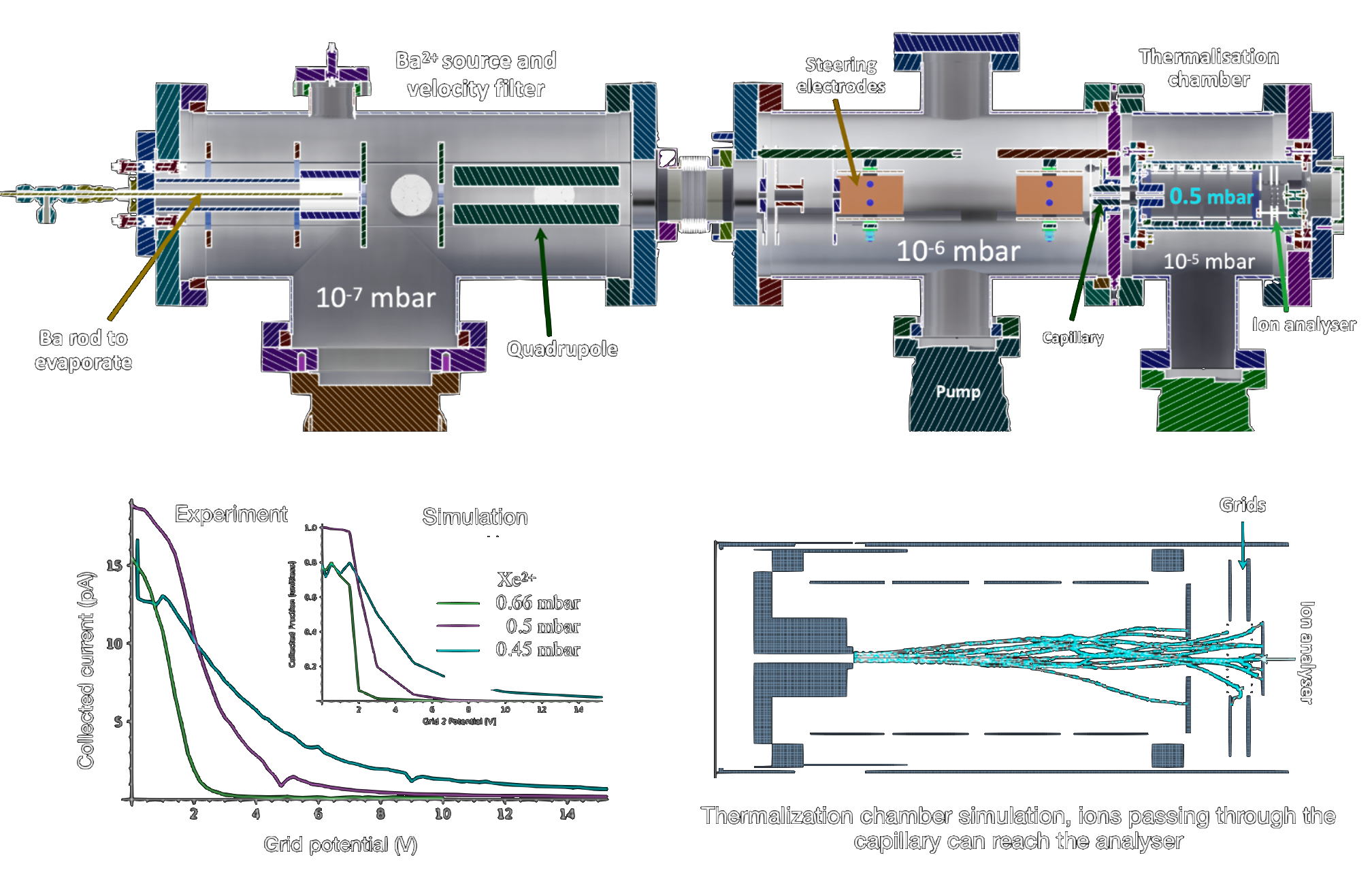Studying the process of capturing a Ba2+ ion by any molecule requires the use of a barium source that can emulate the conditions of the NEXT chamber. For some studies, evaporation of neutral barium salt molecules is sufficient to deliver a flux of Ba2+ ions to the relevant imaging surfaces for experiments to proceed. The image below shows the setup that has been used for this purpose in Ref. [1]. This technique allows the deposition of barium on molecules in ultra-high vacuum and studies the interaction with molecules in-situ.
For future experiments, however, bare Ba2+ ions are more desirable, since they more faithfully reflect the species that must be captured in the neutrinoless double beta decay applications. These ions can be produced by electron impact ionization and charge breeding in a high density plasma. By evaporating barium metal into an ionization region, various charge states are produced, for example, Ba1+, Ba2+, Ba3+, which can be pulled from the plasma by applying appropriate voltages on the extraction electrodes. By tuning the various potentials in the system, test beams enriched in Ba2+ can be realized. The beam shown below and published in Ref. [2] has been demonstrated to deliver a clean flux of barium ions that are predominantly in the 2+ charge state. It is now being used to characterize the response of molecular layers to impact of Ba2+ in vacuum.

Ba2+ ions must ultimately be injected into a xenon gas chamber, in order to study Ba2+ capture at a molecular layer in xenon gas directly. This introduces a new and complex set of challenges. The ion source requires high vacuum for its operation whereas the ions must be extracted and transported into a gas at non-trivial pressure. A new and powerful test beam system to accomplish these two goals is under development within NEXT, shown schematically below [3]. Ions are extracted from the ion source and focused via quadrupole ion guide before being accelerated and steered into a thermalization chamber via a capillary. Multiple stages of differential pumping ensure the source runs at the functional pressure of 10-7 mBar while the thermalization and imaging chamber is maintained at 0.5 mBar, sufficient to stop and thermalize the ions and study their reactions with barium sensing layers. This system is currently commissioned with xenon ions, after which Ba2+ will be produced and accelerated. Subsequent stages of this program will introduce imaging optics to study fluorescence reactions of thermalized ions in modest pressure gasses.

References
- P. Herrero, et al. (NEXT Collaboration). Nat. Comm., 13, 7741 (2022). “Ba2+ ion trapping by organic submonolayer: toward an ultra-low background 0νββ decay detector.”
- K. Navarro et. al., (NEXT Collaboration) JINST 18 P07044 (2023) “A Compact Dication Source for Ba2+ Tagging and Heavy 3 Metal Ion Sensor Development”
- A. Redwine et al. (NEXT Collaboration) paper in preparation.
